9/10 OF US STRUGGLE TO STICK WITH EXERCISE. WHY!?
I recently ran a poll on Instagram to find out how many of us struggle sticking to a training program or exercise routine.
The results?
NINE OUT OF TEN.
90%!
So how do only 1/10 people find it easy?
What’s the secret?
I am very excited to share this blog because it’s something so many of you participated in and helped create.
This isn’t just a blog about exercise tips.
It’s a chance to understand more about yourself and figure out the reason behind your action or inaction and how we can improve that.
PS. I don’t do things half-heartedly. Dis is big. But nothing that isn’t necessary.
If you follow me on Instagram, you’d know I love to jump on stories and do a poll. Being able to interact with you and get instant feedback about random human behaviours is extremely fascinating to me. Especially on topics that I have dedicated a lot of time to.
Before we jump into it, I’d like to preface this by mentioning that the results certainly don’t represent a completely random sample of people. It’s 83% women and just over half fall between the ages of 25-34. The next age group is 18-24. However, the results are consistent with the studies I have read about and in regards to this question on exercise, we’re either going to answer yes or no with varying reasons why.
The reason I am interested in the topic of exercise specifically is because despite playing sport as a child and teenager and being fit and healthy most of my life, I have struggled with exercise as an adult.
But for the past 40 weeks I have headed to the gym and stuck with a training program without having to rely on motivation. What changed? We’ll get to that later.
Firstly, why have I struggled?
Same reasons as you. I’ve basically had every reason that popped up in the poll.
See if you can spot your answer or something similar.
I’ve popped them in alphabetical order.
- Can’t stick to the same time
- Days are never the same
- Feel defeated and disheartened when I feel unfit / workout is too hard
- Feel selfish or guilty for not working instead
- Getting bored
- Gym too far away
- Hard to find something I enjoy
- Injured
- Lack of motivation
- No accountability
- No goal to work towards
- Not able to stick to a routine
- Not knowing what to do
- Not seeing results
- Price of classes
- Procrastination
- Running two businesses, not enough hours in a day
- Seems too hard
- Self-sabotage
- Set or commit to a goal and instead head in the opposite direction
- Too busy
- Too hard on myself
- Too much ‘life’ and stress going on
- Too sore after a session to train regularly
- Too tired in the morning
- Too tired in the afternoon
- Too tired full stop due to chronic fatigue
Another common reason that popped up is:
- Mum life
I don’t have children so I can’t relate to this on a personal level yet. However, due to having an obsession with how to make things easy along with being an aunty, a daughter and observing friends with children, I have a few suggestions for this.
Before we get any further, if you answered that you struggle, I’d like to let you know that there is absolutely NOTHING wrong with you and you are certainly not the only one. The answers that came through were repeated SO many times. Apart from ‘mum life’ I have struggled with every single one of them at some point or another.
But there’s good news! Once we learn a little more about ourselves we can begin to understand WHY we struggle and what solutions will work for us individually. We’re all similar, but there are some key differences.
FIRST STEP!
The following quiz (along with the accompanying book) cleared things up a lot for me and also helped me understand what other people need too.For now, take ‘The Four Tendencies’ quiz to find out whether you are an Upholder, Questioner, Obliger or Rebel. This will help you understand how you respond to inner and outer expectations.
Take 'The Four Tendencies' Quiz
The choice to exercise is an inner expectation. However, it can become an outer expectation if you have a coach, team or some other accountability reason outside of yourself.
The results of our poll were:
8% - Upholder
24% - Questioner
53% - Obliger
15% - Rebel

Gretchen Rubin (author of The Four Tendencies and Better Than Before) says most people are Questioners or Obligers and Obliger is the largest tendency of them all, so our results are consistent with this.
I’m a questioner. Probably obvious given I’m questioning this topic in the first place.
‘Motivation’ was a very common answer.
If this was your answer, or you’re interested in a great read check out this blog by Gretchen:
‘Warning! Don’t Expect to Be Motivated by Motivation’
Wooooo let’s get into it.
I’d like to address some of the most common responses and share what has helped me transform my approach to exercise.
These will be relevant regardless of your tendency.
Too busy
There may be 24hrs in a day but when you take out sleep, work, food and transit time there isn’t much left over. A lot of us wake up, eat breaky, go straight to work, have a quick lunch break, go back to work, come home, make dinner, go to bed, and repeat it until the weekend. Throw in varying amounts of social media and Netflix too because for a lot of people it’s a way to keep up with friends, family, news and also a chance to chill out. If you have children or a family this will also be squeezed into the mix.Last year I was running two businesses and at the beginning of the year I would start work as soon as I woke up until the moment I went to sleep.
Until I read this:
If you repeated today every day for the next year, realistically, where would you end up? – Ben Hardy
Read it slowly until it sinks in.This hit home, hard.
I imagined a time lapse of my day.
It was me getting a quick glimpse of the sunrise at the beach before sitting at a café with my laptop working at the speed of light with coffee and food by my side. I’d stay there until the café closed and then go home and continue work until I had to head to The Studio Upstairs to run a class. I got home and my mind was wired and it would take me a long time to get to sleep. I was running on 6hrs sleep each night. My workload, overheads and obligations were intense but I couldn’t stop and let that overwhelm me. I had to simply keep going.
What’s a time lapse of your day currently look like?
Take a moment to imagine your day in fast forward. I imagined watching back a time lapse of myself on a phone or from someone else’s perspective observing my actions.
If I repeated the day I explained for a whole year that would mean NO EXERCISE, no time for friends or family and well on my way to chronic fatigue again.
I completely switched off that weekend and sat at the beach to write down my current priorities in order of what I spent the most time doing. On the next page I wrote down what my priorities needed to be in order to stay fit, healthy and SANE. An order that more accurately reflected what I value or wanted to value.
I’d like you to do the same.
What do you spend most of your time doing?
List the things YOU do / have in your life in order of the time you allocate to it from most to least. Think of it in terms of hours per day or week.Example:
- Work
- Sleep
- Transit / Sit in traffic
- Eat
- Relationship
- Exercise
- Friends
- Family
What do you value?
Reshuffle YOUR list (most likely different to the example) so it will reflect what you VALUE.Notice the difference between what you allocate most time to and what you value / would like to value.
I realised that if I was going to spend 10hrs+ on my laptop working, I needed to honour my body and mind each day too.
Being fit and healthy is something I value and understand the importance of, so I moved exercise, eating (healthy) and sleep to the top of my list.
As I’m a questioner I respond to both external and internal expectations after I have questioned and decided how they apply to me, so this was a necessary step. Once I realise why I want to do something, I can meet this inner expectation.
Check this out to see what might help you:

If you’re a mother or have a schedule that doesn’t allow any time for the gym or classes, have a think about where or how you can include it.
Working out at home is a popular and preferred option for a lot of people.
If you’d like some ideas you can check out my sister’s Instagram page @danalandgren where she shares a bunch of free low impact workouts you can do at home. She’s also a mum and her motto is ‘one round is better than none’.
On the SWEAT app, Kelsey Wells has a PWR (strength) program – one for the gym and one for at home. I haven’t tried her at home program but it looks great.
There is also the Keep It Cleaner app by Steph Claire Smith and Laura Henshaw or Amanda Bisk’s app – I haven’t personally checked either of these out but they seem popular too.
If you have any other ideas please share them in the comments so I can include them for others to check out!
And remember, even though you may feel as though you don’t have any time or want to take time for yourself, it’s not only extremely beneficial for you, but also the people around you.
My mum is an obliger and one of her greatest qualities is how selfless she is. But this can also mean she will put absolutely everyone and everything before herself. After taking the quiz and realising she needs external accountability, we have been having little chats about what that might look like for her. It has helped me understand our differences too – given that they are opposite to a questioner.
There is a reason we are told to fit our own oxygen masks before helping others.
If you’d like the daily checklist I follow please download and print my free Get Clear Checklist.
It’s what I aim to run through to set myself up for the best possible day. It’s also my way to identify where any anxious thoughts and feelings might be coming from. We have some very basic human needs that a lot of us aren’t meeting each day. Give it a go and let me know how you feel.
I have one on my fridge, in my room and in my laptop bag. I know the list off by heart, but the physical copy is a great reminder.
Starting is the hardest part
In Gretchen Rubin’s book Better Than Before (also highly recommend) she mentions that starting is in fact the hardest part of a habit.Once we stop, it’s hard to re-start. That’s why a lot of people who train for a marathon might stop training completely once they have finished the race, because they’ve achieved the goal.
She says it’s easier to have a life-long exercise goal than it is to stop and start with short term goals.
So instead of ‘I’m going to run a marathon’ or ‘I’m going to commit to this 8-week challenge’ something with a bit more longevity could be ‘I love to live a fit and healthy life and set challenges along the way’.
This is something that works very well for me because I tend to go in the opposite direction if I commit to something short term.
For example: During school, when I made our regional cross-country team, I backed off from training leading up to State Titles. Seems silly but I did it time and time again. In hindsight, deep down my goal was probably to get the cool uniform, have a fun trip making new friends and that was it ;). I wasn’t too concerned with my result but there was an element of ‘self-sabotage’ that I never really understood.
Questioners resist outer expectations (the expectation of running fast at State Titles) but we meet inner expectations (got the uniform – win :p). Knowing what I know now, the advice I would have given myself is to sit down and come up with a personal goal for State Titles. Figured out WHY I wanted to aim for a personal best time. Or understand why I was struggling to push myself. Running was a huge mind game for me and I know I would have enjoyed it more if my headspace was better. Back then this wasn’t a priority or really a topic of conversation but sport psychology is huuuge!
Motivation and willpower
After I took that beach day to really reflect on what I value I realised that I want to be fit for life and I was sick of it requiring so much motivation and willpower to stay consistent. I needed to get to the bottom of this.The next book on my list was ‘Willpower Doesn’t Work’ by Ben Hardy – I mentioned a quote of his earlier.
It’s all about how we can alter our surroundings to support our goals. How to make our environment work for us. In this case it was how I could make my timetable work for me too.
My willpower to workout drastically decreases as the day goes on so I knew training would have to be a morning thing for me. If I left it until the afternoon it was too easy to convince myself that work was more important or that I was too tired and should ‘listen to my body’ which gave me an excuse to skip it.
I knew that the hardest part wasn’t the workout itself, but it was simply getting myself to the gym. Once I was there I was happy to stay.
So, all I had to do was:
- Get dressed.
- Go to the gym in the morning before work.
I decided I would do this every morning Mon-Fri and do weights or move in some way.
I repeated this morning routine until it became a habit and required little motivation or willpower.
I didn’t have any external accountability but at the time Samuel was working away and we would only see each other every 1-3 weekends. I decided a little goal of mine would be to see how fit I could feel by the time I saw him again. It was an effective little time stamp to measure things by and when a relationship is fresh we do weird things like that.
After about two months I began to get bored with the workouts I’d set myself as I would only rotate through the exercises I knew and was comfortable with. I wasn’t following a particular program so I’d often work too many areas of my body at once and then felt too fatigued to do a proper session each day of the week. ie. Would unintentionally train legs on upper body days and then be too tired to do a proper legs session.
I dropped to 2-3 gym sessions a week because my muscles felt too sore to train any more than that.
My body felt like it was getting enough of a workout because the DOMs (delayed onset muscle soreness) meant I could feel my muscles all week despite only training a few times. But it meant that I wasn’t exercising at all on the other days.
Deciding what you value is extremely important.
The next step is understanding what you enjoy, what you can sustain and how you can change it up to avoid getting bored.
Mix it up
A lot of people mentioned that they were too tired or needed different workouts for different days and different energy levels. Me too!When I realised I was only really exercising 2-3 days a week I knew I needed some favourite go-to forms of movement to splice in between my weights sessions.
These were my reasons for choosing what I did:
Weights – I prefer this style of training because it doesn’t require me to get my heart rate high or really work up a huge sweat, which is ideal for me after having chronic fatigue. I get to choose the weights I’m comfortable with and I feel strong and empowered when I train rather than defeated and disheartened (the feeling I get when I do high intensity workouts). I also love the feeling of sore muscles because they feel active and I know it’s working. I haven’t found another form of exercise that provides me with this type of feeling or immediate physical results. Reformer pilates comes close but I find myself feeling a little frustrated / defeated at times and it’s $$$!
Surfing – This is weather dependent so it’s something I’d do occasionally when my schedule aligned with the conditions. Mostly on weekends. Surfing is a great workout that doesn’t even really feel like a workout. Until you get out of the water and are happily exhausted.
Beach walk/jog – If I felt like I needed to get outside and have some fresh air I’d go for a walk or jog along the beach with a bag to pick up rubbish. A feel good on so many levels. I’d also do this on days where I really couldn’t be bothered to get out of the house but I knew I’d feel better for it + I got to do something for the environment.
Bike ride – I don’t use my bike all that much but it’s a fun alternative if I feel like getting outside with little effort.
After having chronic fatigue, I have become very in tune with listening to my body regarding exercise. I lean towards the lazy end of the spectrum rather than ever over doing it.
Exercise can also be much more effective with a less is more approach – especially for girls. If we are tired or constantly throwing our bodies into a fight or flight mode our hormones can quickly be thrown out of whack which can lead to weight gain. I’ve seen it happen with a number of friends. As soon as they back off and do less, the weight drops.
I only do things I enjoy. I no longer run (as a form of training) or do any high intensity classes because they leave me worse off. If you’re feeling worn out rather than stronger, it needs addressing.
A helpful game I like to play when I’m unsure of what to do is ask my mini me what she’d like to do. I like to imagine a quick chat with my 8yr old self. Her answers are usually: Rollerblading! Skateboarding! Beach! Bike ride! Move for the fun of it.
Make it easy
Outsource the hard stuff.I grew up as a swimmer and a runner with coaches for both (external accountability). Mum and Dad had a rule that my sister and I were to do a sport of our choice for as long as we lived under their roof, we agreed that this was a great idea and training became a non-negotiable (a value like we discussed earlier).
This means I’m familiar with being dropped at training and being told what to do. Not getting myself to training, writing a hard program and then pushing myself for the next one-two hours.
I realised that’s essentially what I was attempting to do at the gym when I could easily outsource the program writing and encouragement to someone else.
That’s when I decided to trial Kelsey Well’s PWR program in the SWEAT app. I looooved it straight away and accidentally paid for the entire year subscription. After that I thought ah well, it’s paid for so I guess I better stick with it.
My exercise routine and habit had just got a whole lot easier
- Get dressed.
- Go to the gym in the morning before work.
- Turn on the SWEAT app and follow the program.
The reason I have been able to train for the past 40 weeks with ease is because:
- I took the time to understand what I value – being fit and healthy for life. It was no longer committing for 8 weeks or training for a specific goal (ie. a race). I decided that exercise / movement was simply going to be a part of my everyday life, forever.
- I acknowledged that getting to the gym was the hardest part so the only effort required was really putting on workout clothes and walking to the gym. Once I got there I was fine.
- I knew that training in the morning was far easier for me than having to work up the energy to train in the afternoon. So, I repeated this until it became an automatic habit and part of my morning routine.
- Due to my limited knowledge of weight training, following a program made my workouts much easier and more effective. Using the SWEAT app also offers a sense of accountability as it tracks your workouts as well.
- Having other enjoyable options for movement provides variety and a chance to do everything I love. Eg. Surfing, walking/jogging along the beach, bike rides.
Flexibility (for when your schedule changes)
After about 6 months of effectively establishing this exercise habit we started traveling between the Gold Coast and Sunshine Coast to help out my parents.Samuel and I deliberately chose a gym membership that had multiple locations around Australia. This meant we could go to the gym on the Sunshine Coast near Mum and Dad’s place for the same price.
However... Sam prefers to train in the afternoon. If he trains in the morning he found he didn’t have enough energy for a full day of physical work (he’s a carpenter). Understandable. My work involved sitting at a computer or packing orders.
I needed to adjust.
The easiest thing to do in terms of juggling cars whilst at Mum and Dad’s was for me to also train in the afternoon. Because I was very aware that this was a huge struggle for me I gave Sam permission to be my external accountability and not allow me to have any excuses. Even though it was in the afternoon, once I got to the gym and started training I was fine and I had more energy than I realised. So again, the hardest part was simply getting there and I outsourced this to Sam.
Too tired
Spend energy to make energy.If you’re like me and find it too hard or have too many excuses to train in the afternoon, making exercise a habit in the morning works a treat. It takes a small amount of energy to get to the gym but once I’ve had a workout I have more energy and mental clarity throughout the day. The advantage of getting it done in the morning is that you have the rest of your day to do whatever you need to do.
If you’re too tired in the morning to train you’ll need to work out whether this is due to going to bed too late, not getting enough sleep or having a poor-quality sleep. Some people are night owls and function better later in the day. But before simply assuming you’re a night owl head over and read my blog Get Sleepy for some tips on what helped me improve my sleep.
If you are too tired due to chronic fatigue or adrenal fatigue, I’ve been there too. At the time I had chronic fatigue I also had chronic back pain from my unmanaged scoliosis. This really limited the type and amount of movement I could do. That’s when I began stretching and it was the main reason Get Bendy was born. If you don’t already have the Get Bendy poster to plonk yourself in front of, I highly recommend adding stretching to your routine. It’s gentle, helps to reduce pain and it’s something you can do at home.
And remember, spend energy to make energy.
The secrets of those who find it easy
So, what are the 10% of people doing that find an exercise routine easy?I just gave it away.
They’ve made it a routine.
When something becomes a routine you no longer have to rely on motivation or willpower. Just like brushing your teeth, it can become something that you simply do without much thought.
A lot of people said that they value exercise and how it makes them feel so it’s something that they do as part of their day. Either before or after work. This is also referred to as habit pairing. ‘On the way home from work, I go to the gym / F45.’ Once you’ve done it a number of times it becomes automatic and easier. Repetition is key.
Some find it easy because they notice results. Training can seem pointless or not worth the effort if you aren’t seeing results. FEELING and noticing a change in your mind and body is a great way to stay motivated to stick with it. Keep trialling different styles of workouts until you find something that offers clear results for you. Mine is weights. For others its pilates. Ask people you know or try the workouts of people who have a similar body type or interests to you.
Obligers RESIST inner expectations but MEET outer expectations which means exercise has to become an outer expectation if they’re going to find this routine easy. If you’re an obliger you NEED some kind of external accountability.
A very common answer from people who found a routine easy was that they do F45 or another type of group training. This is effective for many reasons:
- External accountability of paying for the weekly membership.
- Trainers to encourage you through the workout.
- There is no thinking involved because the workouts are planned for you.
- You can train with friends or other people in your area.
- You may also have the accountability of booking into a class prior.
A common answer from mums was joining a gym that had a creche. This meant they could incorporate training for them and playtime for their children into their routine.
A lot of people said training with friends and having an accountability partner worked really well. This is again very important and effective for Obligers and Rebels who resist inner expectations.
Another popular answer was that they had found something they enjoy which makes it easy. This is KEY and it may only have to vary slightly.
For example: Within the SWEAT app there are multiple trainers with different styles of programs. I could never get on board with Kayla’s BBG program because high intensity workouts with lots of jumping are not enjoyable for me at all. It’s also very difficult for anyone suffering from chronic / adrenal fatigue. However, Kelsey’s PWR program within the app is fantastic for me and easy to enjoy. The weights program doesn’t require me to get my heart rate up too much. I get to choose how many reps I do in the time-based sections and also get to pick my own weight for machines and dumbbells.
Another popular reason an exercise routine was found to be easy was having a goal to work towards. Whatever that goal might be it’s important that it’s tied to an element of longevity to ensure it doesn’t stop after the race or achievement is reached.
Winding things up
Key things to remember:
- Motivation comes and goes. Routine keeps us going. If you find yourself saying ‘I don’t have motivation’ swap the word motivation out for routine ‘I don’t have a routine’ and see how that sits with you. The people with routines aren’t relying on motivation, they’re relying on values, habit and external accountability.
- Knowing and understanding your tendency and the way you respond to expectations can help you implement an exercise routine that will work for YOU. If you’d like to know more I loved the audiobook of ‘The Four Tendencies’.
- Make it easy and enjoyable. A time and place that works for you. If your schedule requires flexibility decide a minimum amount of times you’d like to exercise and make that your ‘constant’.
- HAVE FUUUUUN! Move in a way that feels good for you. If you hate running, don’t do it. If you feel defeated doing high intensity workouts, choose something else. If you can get outside and do something enjoyable in nature – double win.
“We can use decision-making to choose the habits we want to form, use willpower to get the habit started, then—and this is the best part—we can allow the extraordinary power of habit to take over. At that point, we’re free from the need to decide and the need to use willpower.
We take our hands off the wheel of decision, our foot off the gas of willpower, and rely on the cruise-control of habits. Mindfully, then mindlessly.” – Gretchen RubinOk that’s all for today.
A casual 5000 words later.
I really hope this can help you. If you enjoyed this blog post leave a comment below or let me know on Instagram and we can have more chats like this.
If you've made it to the end, it's now time to figure out what might work for you and give it a go. Let me know what you decide and your plan of attack.
Lots of love to ya.
Elle :)
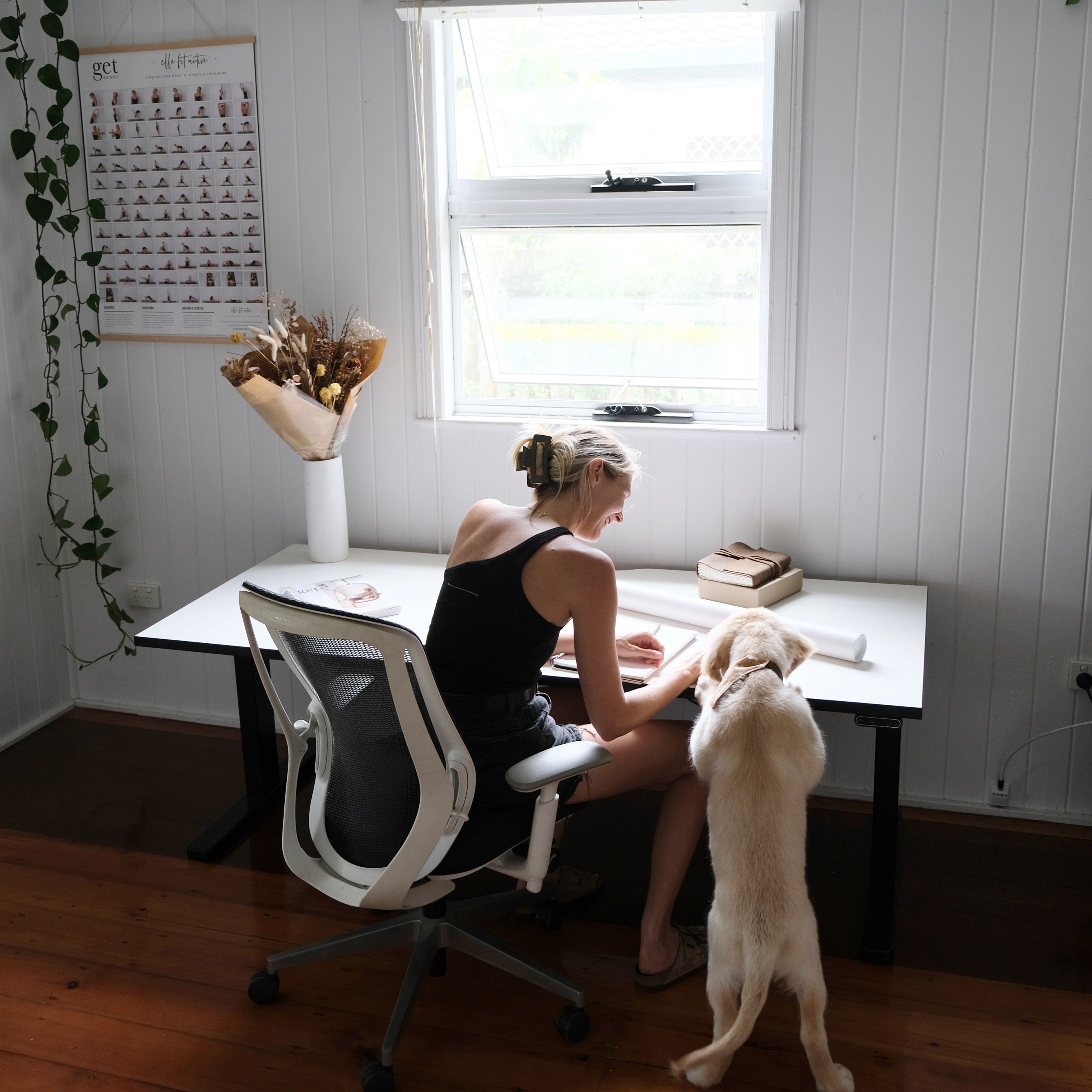
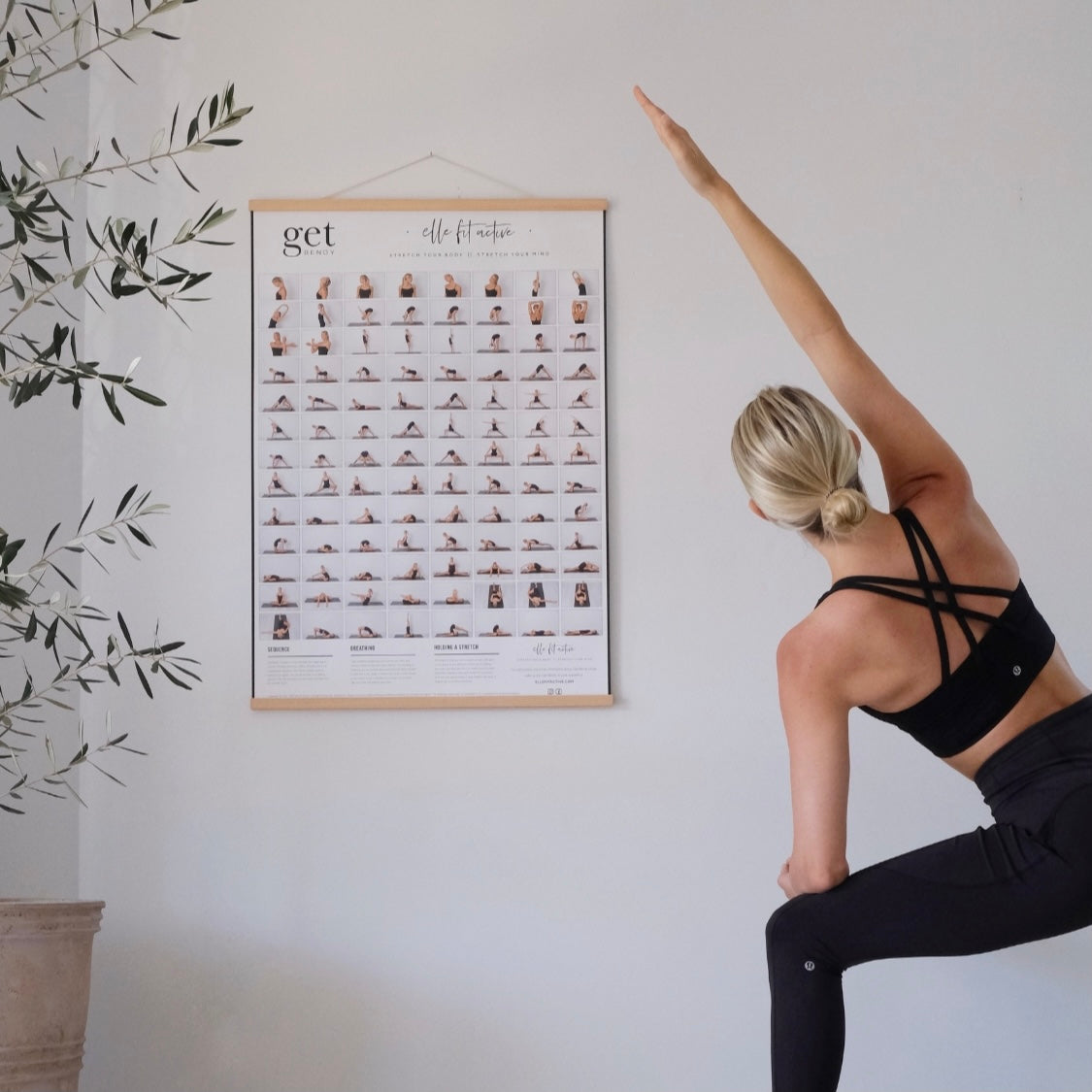
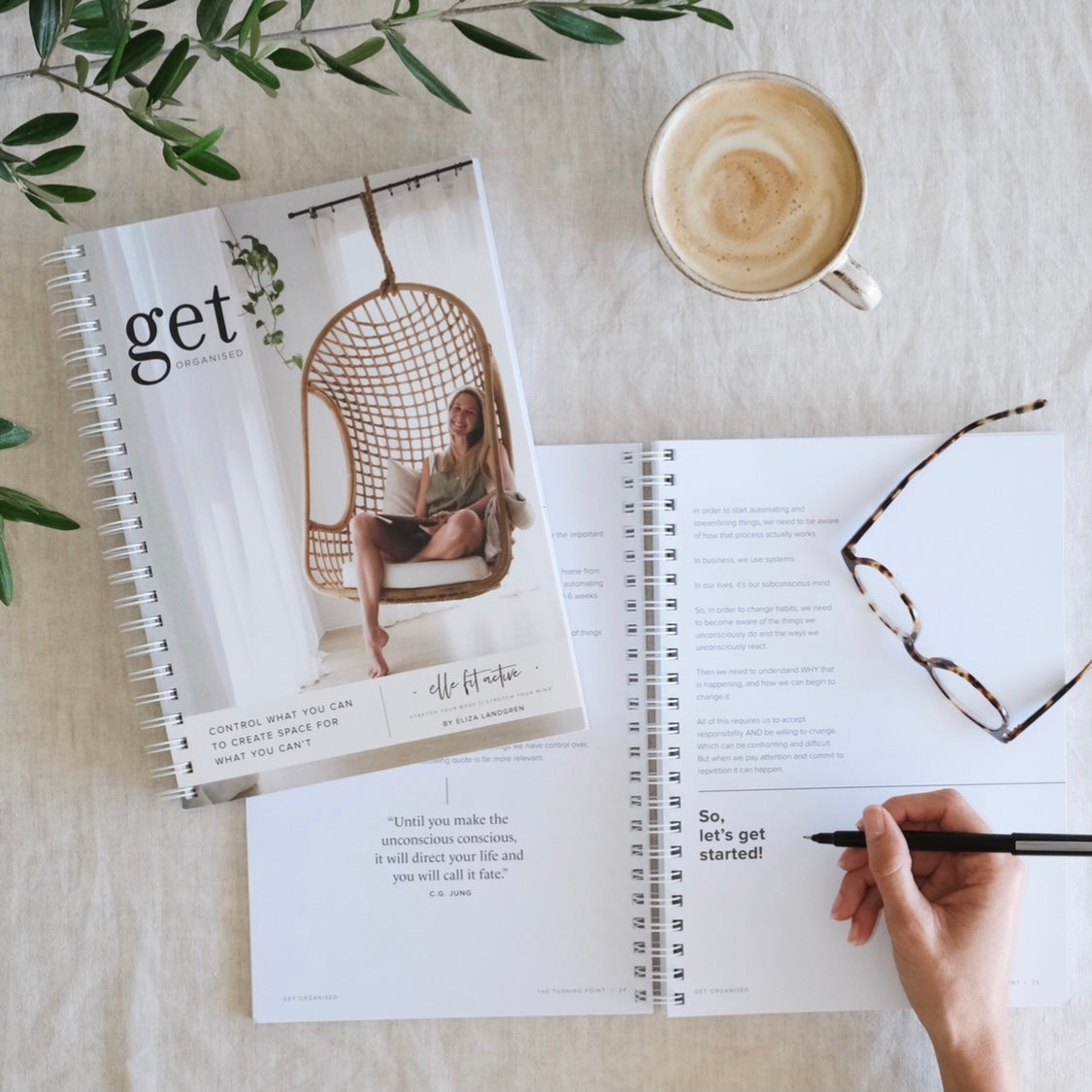
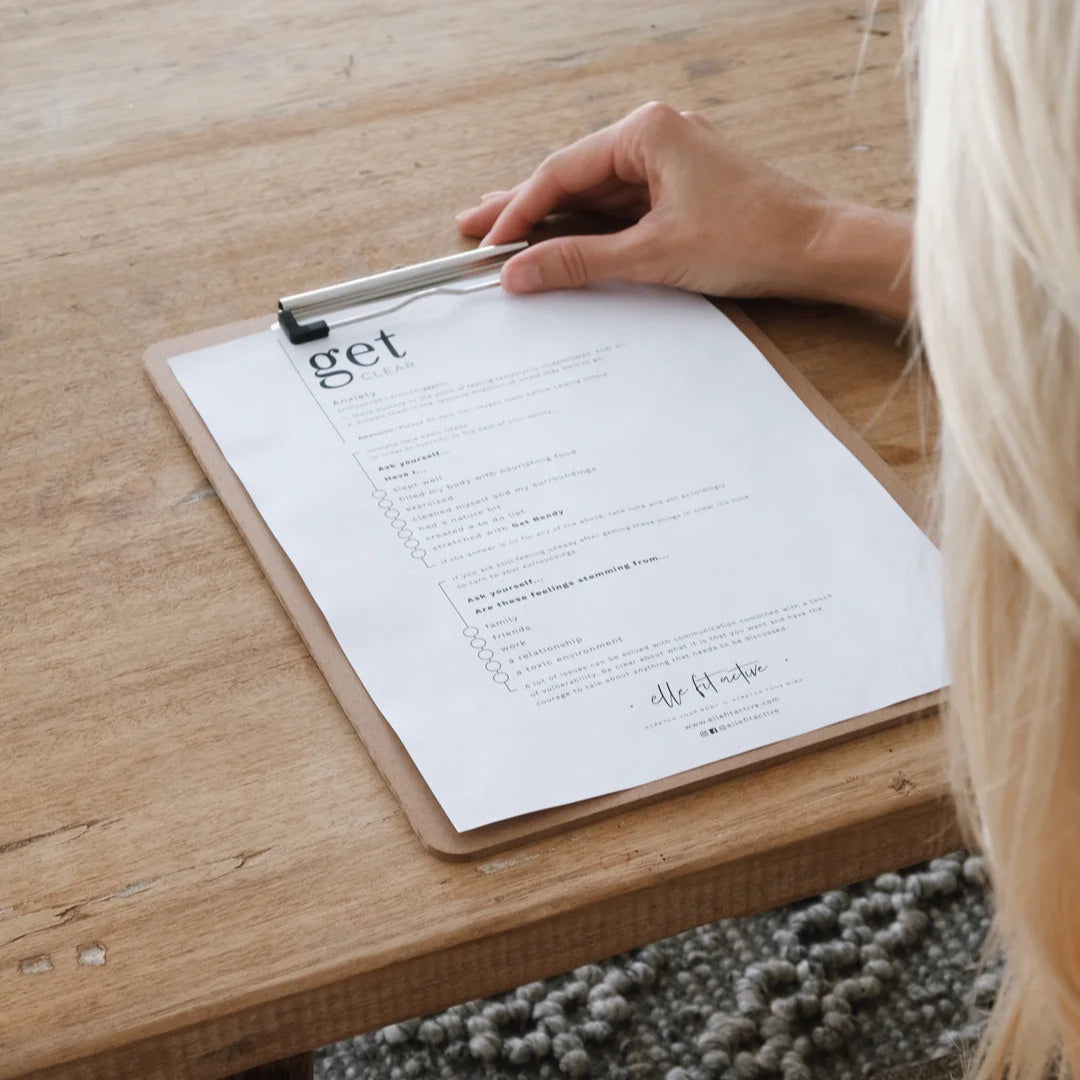



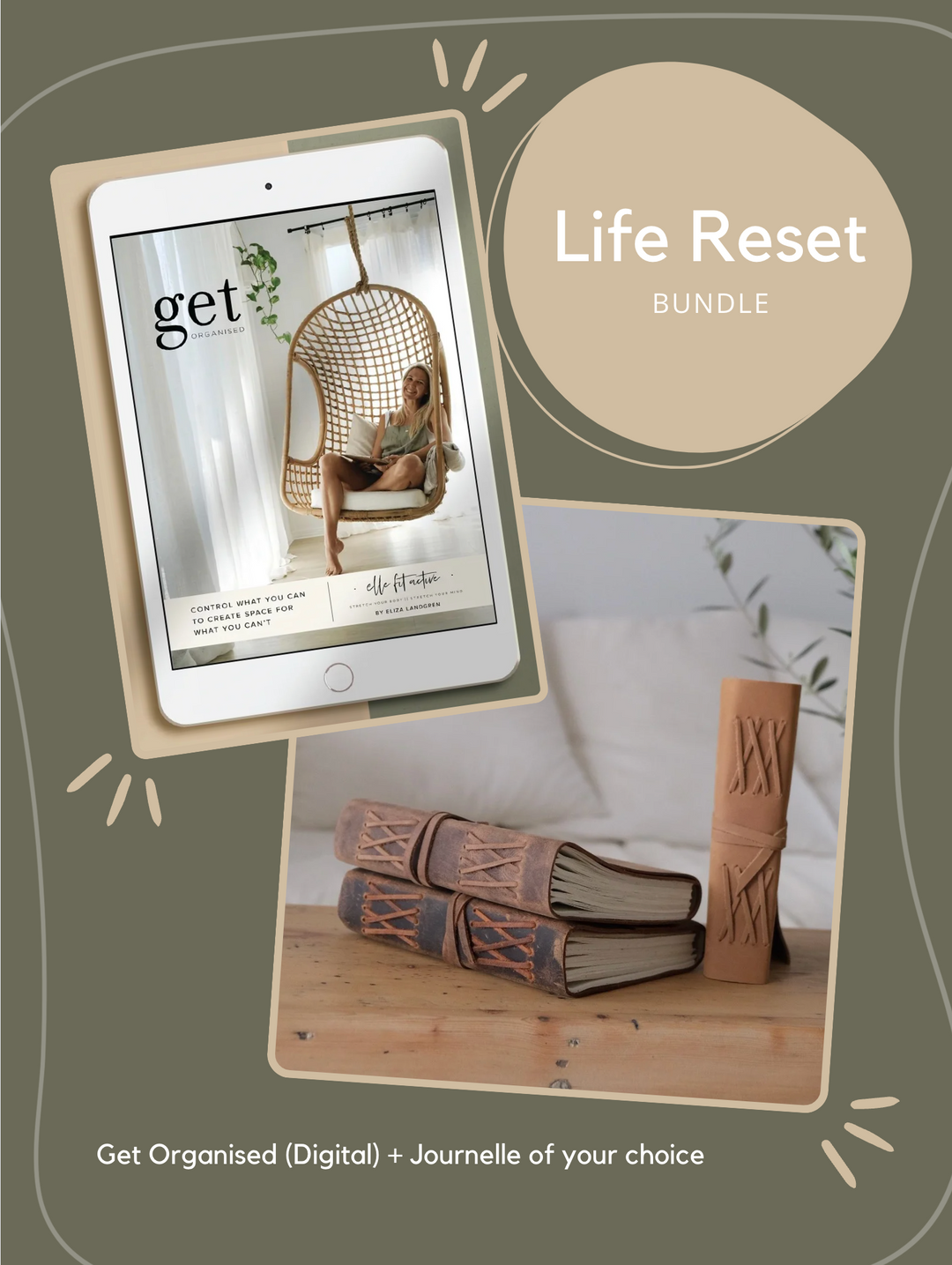

Such a great read Elle. I definitely struggle with motivation and find that I can stick with programmes for a couple of weeks but easily slip off. I’m an obliger and having external accountability definitely helps me a lot, unfortunately I’m not currently in an environment conducive to that (tiny island living), so getting into a routine is key. The other thing that has helped is finding a programme I love. The Vertue Method by Shona Vertue is perfect, you choose your reps, weights and resistance and could essentially do her 12 week programme indefinitely just by steadily increasing everything.
This quiz and this blog post have provided me with so much clarity as to why I’m not the greatest at being accountable to myself (I’m an Obliger). Acknowledging my need to please others, and how much it burns me out, has made me realize that my priorities aren’t what they need to be. Now I know what I need to do to be successful and how to go about it.
Thanks, Elle!! :D
Leave a comment